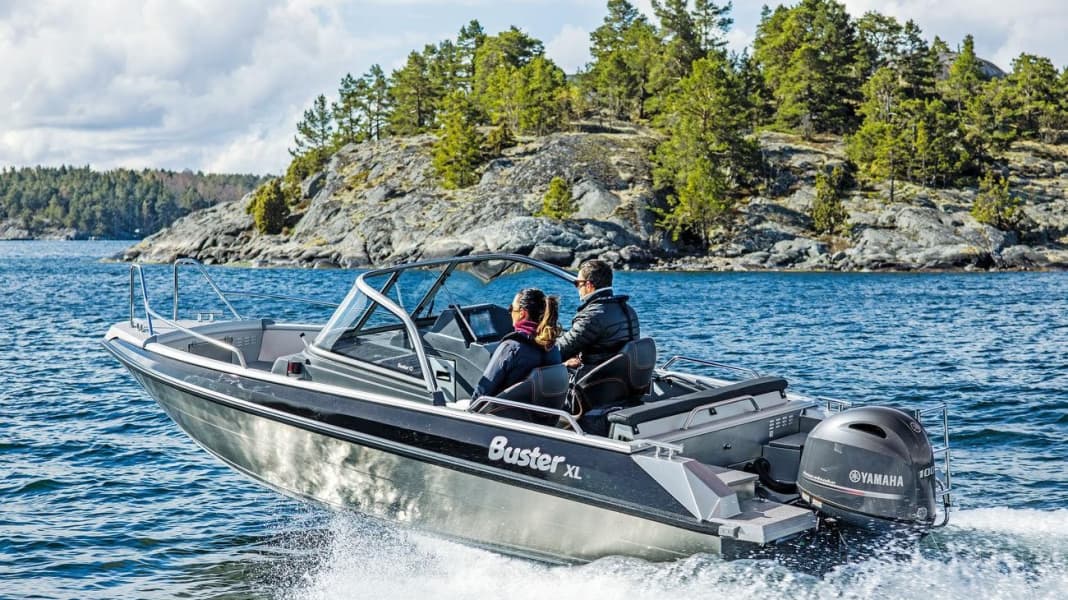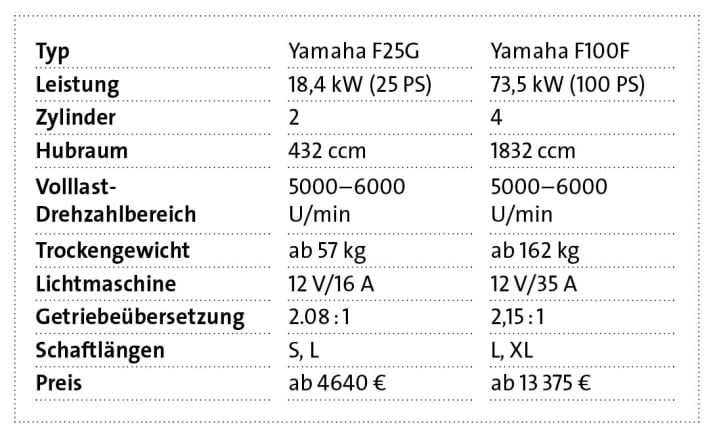Novelty: Yamaha F25G and F100F - Made easy

After Yamaha had completely converted its model range to four-strokes, the 25 hp engine (F25D) in particular suffered from excess weight. At 77 kg, it weighed almost 30 kg more than the old two-stroke engine (25N).
This horsepower class is often used on boats that are not always transported on the trailer, but also on the car roof or in the boot (inflatable boats). The engine has to be mounted and dismounted for this - and an extra 30 kg of weight is quite a chunk.
The additional weight also has a negative effect on the boat's trim, which means that the bow lifts further when accelerating.
The new Yamaha F25G (57 kg) is not as light as the former two-stroke, but according to the manufacturer it is still the lightest in its class.
Further advantages: the smaller dimensions, the position of the gear lever directly behind the throttle grip on the tiller, rapid acceleration, high charging current and good starting behaviour. With regard to the latter, Remko Visser, Marketing & Sales Manager at Yamaha Marine, points out that the engine with electronic injection runs after just one start, even after a long period of inactivity - without the need for a battery. This is made possible by a special capacitor that stores the energy for starting.
E-start models (also with remote control and power trim device) are also available. Another feature: a trolling device that allows you to regulate the speed between 750 and 1050 rpm. We tested the control on a Buster M with tiller steering, and the speed difference was around 1 kn. We reached a top speed of approx. 24 knots, a speed that is fun for a boat like this and should also appeal to younger skippers. Consumption: at full throttle around 0.43 l/sm, in economic planing speed at a good 16 kn at 0.38 l/sm.

We drove the second innovation, the four-cylinder F100F engine, on a Buster XL, which can reach 35 knots with a driving weight of just under 1 tonne. Fuel consumption in this situation is around 1.1 l/sm and just under 0.63 l/sm in economic planing mode. Other test candidates were a cabin cruiser from Yamarin (Cross 60 Cabin, 1280 kg), with which we still achieved almost 32 kn, and a Grand RIB (G580LF), whose top speed was 35.4 kn. The F100F brought all the boats quickly into planing speed and made an agile impression.
According to a diagram presented by Yamaha, all the measurement data compared with the old 100 (F100D) speaks in favour of the new engine.
These include: lower fuel consumption, lower noise and vibrations, better acceleration, slightly higher maximum speed - and less weight. With the extra-long shaft models, the difference is around 7 kg.
